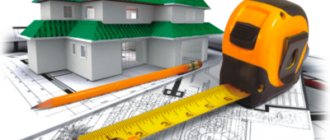Mandatory fire safety requirements for retail facilities
The following fire safety requirements apply to retail trade facilities.
- The area of the room between the fire walls of the floor, the type of these walls and the degree of their fire resistance must comply with SNiP 21-01.-97.
- The premises of built-in stores must be separated from the rest of the building by fire partitions and ceilings.
- Stationary retail trade facilities must be equipped with evacuation routes with separate exits.
- External stairs are only open type. Flights of stairs and cages with natural light.
- Entrances to non-retail premises are permitted only from service corridors.
- Trading areas with natural light or with a forced smoke removal system.
- Departments with flammable and explosive products must be separated from others by special fire partitions.
- Smoke removal from basement storerooms through windows and hatches.
- Installation of automatic fire alarm and fire extinguishing system.
- The finishing of trading floors is made from non-flammable and slightly flammable materials.
- Warehouses must be equipped with windows.
- In sales areas and office premises there should be illuminated signage signs leading to the emergency exit.
- Availability of capable means of fire localization and extinguishing.
- Appointment of a person responsible for the state of fire protection of a retail outlet.
- Maintaining a fire safety briefing log and a fire extinguishing equipment log.
When commissioning a new retail outlet, the following calculations must be made:
- room category according to fire and explosion hazard class,
- technical parameters for installation of a warning system, localization and elimination of fire,
- location and arrangement of evacuation routes,
- fire resistance limits of building materials and structures.
To perform these calculations, it is necessary to invite a fire safety inspector. An opinion on the compliance of a retail outlet with safety requirements can only be obtained if such an expert opinion is available.
How to convert residential premises into non-residential ones?
In most cases, residents of the first floors transfer their apartments to non-residential buildings. Recently, this procedure has become much more complicated. The owner must obtain the written consent of each owner of the premises adjacent to his apartment, as well as a majority vote of the owners of all premises in the house and entrance.
The law does not prohibit placing non-residential premises above the first floor, but in this case, the real estate directly below them must also be non-residential. By law, each non-residential property must be equipped with a separate entrance, so owners of apartments on floors above the first rarely exercise the right to change the purpose of the premises: even a few extra steps up can scare off potential visitors.
Regularity of fire inspections
In accordance with Art. 7 of the Federal Law of 08.08.2001 No. 134-FZ (https://base.garant.ru/12123880/948c9c0734b6e944a4727660f2d5a027/#200) scheduled inspections in relation to one organization or entrepreneur can be carried out no more than once every 2 years. In relation to a newly registered small business entity, the next scheduled inspection can be carried out no earlier than three years after its registration.
In addition to scheduled inspections, unscheduled inspections are carried out - control (designed to monitor the implementation of previously issued orders), operational (if there is information about violations) and based on a complaint from third parties (for specifically formulated violations).
What should not be opened in residential buildings?
Activities in non-residential premises are strictly limited by fire, sanitary and urban planning standards and should not lead to air pollution and residential areas, exceed the permissible noise level, or pose a threat to the life or health of the residents of the house. In particular, the law prohibits the placement in residential buildings of stores selling chemicals, explosive substances and materials, synthetic carpets, auto parts, tires, and motor oils.
The ban also includes establishments operating after 11 p.m., funeral service establishments, warehouses, specialized fish stores, baths and saunas, laundries and dry cleaners, and public toilets.
Consequences of non-compliance of a retail trade object with PPB
If a retail trade facility is found to be non-compliant with fire safety rules PPB 01-03 dated June 18, 2003 N 313, as a rule, a fine and an order are issued with a requirement to eliminate the violations.
Amounts of fines for violating fire safety requirements:
For citizens – 1,000-1,500 rubles,
For legal entities – 150,000 – 200,000 rubles,
For officials – 6,000 – 15,000 rubles.
The issued order specifies a time limit for eliminating violations. Upon completion, a control check is carried out, the purpose of which is to ensure that there are no previously identified violations.
Addition
Still have questions about fire service requirements or need individual advice? Ask any questions to a professional lawyer using the “Lawyer” online service (receive the first answer within 15 minutes).
Supply of utilities
Owners of non-residential premises in apartment buildings are given the opportunity to choose the most suitable option for them:
- Conclude agreements for the supply of services directly with service companies.
- Draw up an agreement with the management company or HOA.
The list of services that can be supplied to the user includes water, energy, heat, gas supply, and sewerage. However, they are provided in the same amount as to other apartment owners.
Owners of non-residential parts of the building are responsible for the proper maintenance of metering devices (meters). Their damage or failure must be promptly reported to the relevant suppliers src=»https://autogear.ru/misc/i/gallery/20380/2040857.jpg» class=»aligncenter» width=»690″ height=»460″ [/img]
Regulatory framework in the field of fire safety of retail facilities
For retail trade facilities, regardless of their specialization and scale, compliance with the requirements of the following standards in the field of organizing trade and ensuring fire safety is mandatory.
- GOST R 51304-99 Retail trade services,
- PPB 01-03 Fire safety rules in the Russian Federation,
- SNiP 21-01.-97 Fire safety of buildings and structures,
- GOST 12.1.004-91 Fire safety. General requirements,
- Federal Law N 123-FZ dated July 22, 2008,
- Federal Law No. 69-FZ of December 21, 1994,
- SP1.13130.2009 EMERGENCY ROUTES AND EXITS,
- SP2.13130.2009 ENSURING FIRE RESISTANCE OF PROTECTED OBJECTS,
- SP3.13130.2009 NOTIFICATION AND CONTROL SYSTEM,
- SP4.13130.2009 EVACUATION OF PEOPLE IN FIRE LIMITING THE SPREAD OF FIRE AT PROTECTION FACILITIES,
- SP5.13130.2009 AUTOMATIC FIRE ALARM AND FIRE FIGHTING UNITS,
- SP6.13130.2009 ELECTRICAL EQUIPMENT.
Fire standards for non-residential premises - Safety Portal
According to the generally accepted classification, houses are usually divided into functional fire hazard classes as follows. Apartment buildings belong to class F 1.3 , single-family houses - F 1.4 . Hotels and hostels, campsites, dormitories of recreational facilities belong to class F 1.2 , but are considered public buildings. Depending on the height of the structure, buildings are conventionally divided into high-rise (over 75 m in height, for which there are no design standards), high-rise (over 28 m), up to 28 m and low-rise (having no more than 3 floors).
According to the requirements of Art. 78 FZ-123 , for residential and public buildings for which there are no design standards, the preliminary stage in the development of design documentation is the development and approval of technical conditions that take into account the degree of fire danger in each individual case. An obligatory stage in the development of STU is the determination of fire risk, but, if necessary, other calculations that justify mandatory measures to ensure the fire safety of objects and people.
As an example, this could be calculating the duration of a fire, the required amount of fire extinguishing agents, equipment and people to extinguish the fire, determining the optimal area of the fire compartment, etc. Although, according to the order of the Ministry of Emergency Situations No. 382 , there is no procedure for calculating the fire risk for residential buildings belonging to to classes F 1.
3 and Ф 1.4 . Therefore, in each individual case, this issue must be resolved in a working manner, when agreeing on the terms of the STU .
When developing STUs for objects with a height of over 28 m, some nuances arise that require the introduction of additional fire safety requirements, which is determined precisely by the height of the buildings.
As Art. 49 of Federal Law No. 190, there are several types of buildings that do not require state examination, and technical documentation is not mandatory for inspection by government agencies. These include:
- residential buildings, individual construction projects, up to 3 floors high, which are intended for one family;
- multi-block residential buildings of the same number of storeys, with a block number of up to 10 units, if the blocks are not connected to each other by means of openings, and each has access to an individual plot of land;
- apartment buildings with up to 3 floors, containing no more than 4 block sections, provided that each of them has a separate entrance and exit from apartments and utility rooms.
Since there is no state control during the construction and design of these types of residential buildings, the fire danger in them is significantly increased compared to other types of buildings.
Assessment of fire safety status of residential buildings
Due to the fact that constitutional norms ensure the inviolability of housing, state supervision officers can carry out an inspection there only with the permission of the owner or tenant, in emergency situations - with the sanction of the judicial executive authorities, but only with the help of bailiffs or special forces. of residential properties are usually inspected , including attics and basements, corridors, halls, and common areas.
Fire service workers must evaluate fire safety according to several criteria.
These include a large concentration of people in the building, an increase in flammability per unit area due to the placement of flammable and fire-hazardous substances, equipment, furniture, an increase in the rate of fire spread, including the vertical direction, a significant length of evacuation routes and the number of people staying in the building at night. . Buildings belonging to III – V degrees of fire resistance, as a result of the development of a fire, collapse of structures, including load-bearing ones, may occur.
To minimize the likelihood of a fire, several factors must be taken into account. Thus, a thermal effect during a short circuit is possible when the insulating layer of cables and electrical communications is damaged. When operating electrical equipment in emergency mode, substances adjacent to it may ignite. Carelessness when handling open flames has caused many fires, as has carelessness when performing work with a high degree of fire risk in residential buildings during renovation or construction.
For residential properties, it is advisable to conduct a fire audit, which is especially true for capital construction projects.
For this purpose, a fire safety assessment is carried out taking into account the developed design documentation, compliance of the building parameters with construction and fire standards, the presence of fire protection systems and their technical condition.
Regulatory requirements for office premises
When designing business centers and office buildings, the most important thing is to take into account all the requirements of SNiP; employees should feel comfortable here, and the appearance of the premises should be attractive. This is the most important thing for every customer of the construction of a large office building.
Starting from 2013, certain rules 118.13330.2012 came into force - this is the edition of the established SNiP dated 06/31/2009. This document contains standards for entire groups of buildings and various premises that have common functional and space-planning characteristics. Buildings of this type are intended only for mental work and work!
24.08.2020 16:37:00
What are the requirements for the basements of apartment buildings?
Construction materialsBuilding materials Reading time: 3 minutes AA18590 We will send the material to you: By clicking on the button, you agree to To regulate work on the maintenance of the housing stock, rules were developed and approved, put into effect by Resolution No. 170 of the State Construction Committee of the Russian Federation on September 27, 2003. At the moment, all of its points are relevant and applicable. Which cellar construction option is best for you?
- Build it yourself
- Order turnkey construction
Loading.Clause 3.4 specifies a list of requirements for the maintenance of basements and subfloors.
In particular, the organization entrusted with servicing a residential building must ensure the temperature conditions of the underground and their air humidity. This will provide reliable protection against condensation on
Login to the site
After registering a company and starting operations, one of the main issues facing an entrepreneur is purchasing or renting suitable premises for his office. Finding this is often difficult. It is desirable that the office is located in a place convenient for work, its area is sufficient for conducting activities, the layout is good, and the cost of rent or purchase is affordable. There are several options for solving the problem of finding office space:
rent;
purchase of specially equipped work premises in a non-residential building;
purchasing an apartment in the city's housing stock with subsequent registration of all documents.
In this article we will consider in detail the features of using residential premises for commercial purposes, as well as their transfer to non-residential (commercial) stock.
If you purchase or rent premises in a residential building, you must check whether there is permission to use this premises as an office. If there is no such permission, it should be obtained, since the law prohibits the use of residential premises as an office.
Despite the fact that the apartment was not originally intended for these purposes, buying it for an office is beneficial from an economic point of view. This makes it possible to save on purchasing a full-fledged office space - the cost of a finished office will be much higher.
In addition, it is easier to find an apartment of a suitable size in the right location - you can use the help of real estate agencies, newspaper advertisements, Internet searches or personal connections.
After completing the transaction, you need to draw up the necessary documents, plan the premises in accordance with your requirements, carry out repairs and begin work. But in order to avoid negative consequences, before starting operation it is necessary to properly convert the apartment into an office.
In most cases, especially if the company’s activities are related to the provision of services to the public, it is most preferable and convenient to rent or purchase an office on the ground floor of residential buildings with the obligatory possibility of organizing a separate entrance.
Resettlement procedure
An apartment can be the object of sale and purchase only if it is privately owned. Therefore, before making a purchase, a municipal apartment must be transferred from state ownership to private ownership or privatized.
To obtain ownership of an apartment, it is necessary to select and provide its owner with an alternative residential property. If several people live in the apartment, or the apartment is communal, then it may be necessary to resettle. In this case, each of the persons living in it must be provided with housing. After this, the vacated apartment will be able to become the property of the interested individual or legal entity.
Resettlement of a residential property that is in joint ownership is possible only with the voluntary consent of all its owners and residents. If the apartment is located in a departmental building, you must obtain consent to transfer this housing from departmental subordination.
Having determined the cost of the apartment, it is necessary to calculate the amount for the purchase of new housing for its owners. To do this, determine the number of square meters of total area per each financial and personal account.
Before selling, you should collect all the documents required to complete the purchase and sale transactions. If the owners of the apartment have minor children, it is necessary to obtain the consent of the guardianship authorities. Having resolved all of the above issues and selected separate housing for each participant in the resettlement, the state registration of the transaction is carried out.
Sometimes reaching an agreement with each of the owners becomes a rather complicated process. Seeing increased interest in their apartment, they may deliberately inflate the price. In this case, it may be easier to find another option for purchasing an apartment for office space.
Registration of ownership
After selecting and purchasing an object that meets your requirements, you need to register ownership of it. In this case, registration is carried out in the same way as with a regular purchase of an apartment for living.
In order for ownership of an apartment to arise, a corresponding entry must be made in the Unified State Register of Rights (USRE). The registrar is provided with the required package of documents. The fundamental document for registering property rights is the apartment purchase and sale agreement, which contains agreements on all essential terms and is signed by the parties to the transaction.
When conducting a transaction, it is necessary to take into account that depending on who the buyer is - an individual or a legal entity - the list of documents will be different. An individual should be provided with a copy of their passport, and a legal entity should be provided with certified copies of constituent documents and an extract from the Unified State Register of Legal Entities. This statement is valid for one month from the date of receipt. If the form of organization of the legal entity is a joint-stock company, then it is additionally necessary to provide the consent of the shareholders to the acquisition of this property.
A receipt for payment of the state duty and its copy are provided in any case. However, the fee for registering property rights for individuals is 1,000 rubles, and for legal entities – 15,000 rubles.
Re-registration as a non-residential property
After purchasing a residential property, it is necessary to transfer it to non-residential property in accordance with established procedures. The procedure for transfer is established in Chapter 3 of the Housing Code of the Russian Federation “Transfer of residential premises into non-residential premises and non-residential premises into residential premises”.
The main condition for carrying out such a transfer is the availability of access to the premises being transferred without the use of premises that provide access to residential premises.
The transfer of residential premises to non-residential premises is impossible if:
there is no technical ability to organize access to this premises;
the premises being transferred are part of a residential premises or are used as a place of permanent residence;
the ownership of this premises is burdened with the rights of other persons.
In an apartment building, transferring an apartment to non-residential premises is allowed only when the apartment is located on the first floor of the building, or all the premises under this apartment are not residential.
In many modern new buildings, the first two floors are initially non-residential (commercial real estate) and have entrances from the street that are separate from the residential entrances. Such premises can be selected at the construction stage.
To carry out the transfer of residential premises to non-residential premises, the following documents should be prepared and submitted to the body performing the transfer of premises at the location of the transferred premises (in Moscow - the Department of Housing Policy and Housing Fund of the City of Moscow):
application for transfer of premises to non-residential;
title documents for this premises (originals or notarized copies);
plan of the premises being transferred and its technical passport;
floor plan of the house in which the premises being transferred are located;
a plan for the reconstruction and (or) redevelopment of the transferred premises prepared and executed in the prescribed manner (if they are necessary to ensure the use of the premises as non-residential).
The body performing the transfer of premises issues the applicant a receipt for receipt of documents indicating their list and date of receipt. Based on the results of consideration of the submitted documents, no later than 45 days from the date of their submission, a decision is made to transfer the premises to non-residential or to refuse to carry out the transfer.
No later than 3 working days from the date the decision is made, the body carrying out the transfer of premises issues or sends to the applicant at the address specified in the application a document confirming the adoption of a particular decision. Simultaneously with the issuance or sending of this document to the applicant, the body carrying out the transfer of premises informs the owners of the premises adjacent to the one in respect of which this decision was made about the decision.
If it is necessary to carry out reconstruction and (or) redevelopment of the transferred premises, and (or) other work to ensure the use of such premises as non-residential, the document must contain a requirement for their implementation, as well as a list of other necessary works. If no work is required, then a document confirming the completion of the transfer of the premises serves as the basis for using the premises as non-residential. If required, the basis is the completion of reconstruction and (or) redevelopment.
The owner of the transferred premises must make a change to the Unified State Register in connection with the change in the purpose of the property.
Refusal to transfer residential premises to non-residential premises
According to the Housing Code of the Russian Federation, refusal to transfer residential premises to non-residential premises is possible in the following cases:
failure to submit the above documents;
submitting documents to the wrong authority;
non-compliance with the conditions for transfer of premises;
inconsistency of the project for reconstruction and (or) redevelopment of residential premises with the requirements of the legislation of the Russian Federation.
The reconstruction or redevelopment project must be prepared by a licensed organization. When developing this project, you should take into account all the requirements for the premises (technical, sanitary, fire safety, environmental) and the materials used. If the project does not comply with legal requirements, this may be grounds for deprivation of the license of the specialists who developed it.
The decision to refuse to transfer the premises is issued or sent to the applicant no later than three working days from the date of its adoption. The applicant may appeal this decision in court. The decision must contain the grounds for refusal with reference to the violated legal requirement.
Reconstruction and redevelopment
Of course, an apartment with a standard arrangement of rooms without renovation is not suitable for professional activities. Therefore, a project for its reconstruction or redevelopment must be developed.
Reconstruction of a residential premises is the installation, replacement or transfer of utility networks, sanitary, electrical or other equipment that requires changes to the technical passport of the residential premises.
Redevelopment of a residential premises is a change in its configuration, requiring changes to the technical passport of the residential premises. Redevelopment may include moving and dismantling partitions; moving and installing doorways; disaggregation or consolidation of multi-room apartments; installation of additional kitchens and bathrooms; expansion of living space due to auxiliary premises; eliminating dark kitchens and creating entrances to kitchens directly from residential premises; installation or refurbishment of existing vestibules.
Redevelopment and redevelopment are carried out only in agreement with local authorities.
The prepared redevelopment project is agreed upon by:
SES;
fire inspection;
KGIOP (Committee for State Control, Use and Protection of Historical and Cultural Monuments) - if the house is a historical and cultural monument;
administration of the district in which the premises are located;
housing agency;
State Institution "Dortechnologies";
IMC (interdepartmental commission).
The list may vary depending on the specific situation. After approval from all authorities, the MVK issues permission to carry out the necessary work on the premises.
After all work is completed, the premises are accepted. For this purpose, the local government authority at the location of the premises being transferred creates an acceptance committee. She draws up an act confirming the completion of reconstruction and (or) redevelopment work. This act is sent to the organization (body) for recording real estate objects.
The redevelopment act is signed by:
owner of the premises (tenant, subtenant, owner);
balance holder (homeowners association, management company);
the enterprise responsible for the technical condition and operation of the building (GREP, REP, etc.);
the organization that compiled the redevelopment project (design);
a construction organization that carried out work on office redevelopment;
fire supervision service.
After receiving the signed act, you must obtain a new passport from the BTI, a new cadastral number and register property rights in Rosregistration. After this, the organization has the right to use the apartment for office space.
When can you run a business from home?
In most cases, residential premises can be used as an office only after they have been converted to non-residential premises. But, nevertheless, if a number of conditions are met, you can run a business from home:
the private individual must be the owner of the premises;
the activities of an entrepreneur should not violate the rights and interests of other citizens;
the owner of the home can use a residential apartment as an office to work as an individual entrepreneur or to conduct professional activities. This activity is carried out by people of creative professions, lawyers, tutors, tailors, auditors and freelance accountants.
The owner can carry out professional activities in residential premises with the consent of his family members. In turn, if the premises are occupied under a rental agreement, the lessor must give consent to use it for work.
These types of activities have the right to be carried out not only by the owners of residential premises, but also by tenants, as well as by persons living in these premises legally (family members of the owner or tenant).
It is not allowed to use your own residential apartment for industrial production, opening a store, kindergarten or mini-laundry. In this case, it is necessary to first transfer the residential premises to non-residential ones and follow the operating rules. The same must be done for those who intend to rent out their apartment as an office.
A legal entity cannot use a rented apartment for an office until it is transferred to non-residential stock. A legal entity has the right to rent residential premises only for the accommodation of its employees.
Operating rules
Conducting business and professional activities in residential premises is permissible only if the legitimate interests and rights of other citizens living in this apartment are respected. The rights of neighbors living in an apartment building should not be violated. Otherwise, they can file statements with the police or file lawsuits in court.
In addition, when using an apartment as an office, the rules for the use of residential premises and fire safety requirements must be observed.
safety, sanitary, hygienic and environmental standards approved by executive authorities.
The activity should not create excessive noise, vibration, release of gases, hazardous substances and waste.
Conclusion
The opportunity to become the owner of commercial real estate by transferring an apartment from residential to non-residential attracted the interest of entrepreneurs from the very first stages of development of this market. Apartments converted into offices and shops have proven to be a very profitable investment and bring up to 25% income per year.
Correct implementation of all actions for choosing, purchasing and reconstructing an apartment into office space will allow you to get an office that fully meets your requirements. This will definitely have a positive impact on your business.
Ksenia Belova, columnist for Realto.ru





